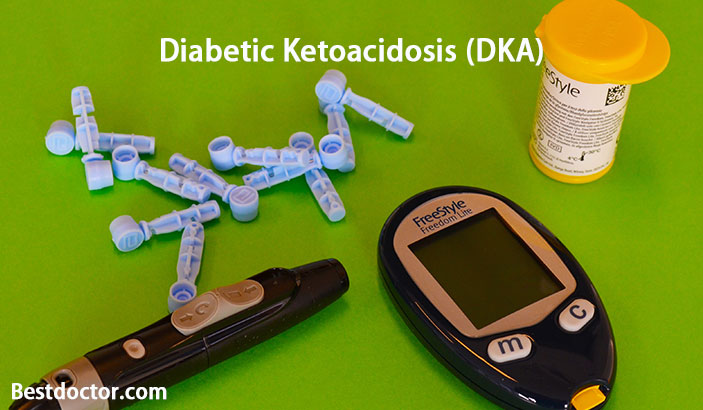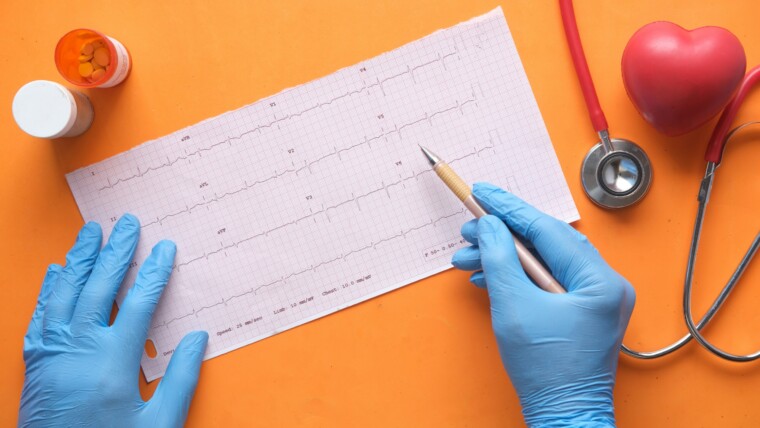Introduction
Diabetic ketoacidosis is a condition characterized by high ketone levels in the blood. It is a severe life-threatening disease. DKA affects people with diabetes. It develops when the blood sugar level is too high for an extended period.
DKA occurs when the body does not produce enough insulin. Insulin helps the glucose to convert into energy and enter into cells. Without insulin, the body starts breaking down the fat as fuel. The breakdown of fats faster leads to a build-up of ketones leading to diabetic ketoacidosis.
Causes:
The different causes of DKA are:
- Insulin deficiency: The DKA occurs when there is not enough insulin in the body. The lack of insulin in the body can be due to:
- Type 1 diabetes: DKA is one of the complications of Type 1 Diabetes. The body attacks the insulin-producing cells present in the pancreas resulting in decreased or no insulin synthesis.
- Forgot to take insulin
- Missing meals
- Using expired insulin
- Illness: Sometimes, the body sugar level gets disturbed due to disease and infection.
- Pregnancy: DKA may develop in pregnant women with diabetes as they experience insulin resistance as pregnancy progresses.
- Pancreatitis: It may decrease the level of insulin, triggering DKA
- Heart attack or stroke: Heart attack may also lead to DKA.
- Alcohol abuse or drug abuse: It produces hormones that make it difficult to use insulin.
- Certain medications: Medicines such as corticosteroids or antipsychotic drugs can lead to DKA.
- Specific endocrine conditions: Conditions such as hyperthyroidism and Cushing syndrome
- Stress: Stress such as emotional or psychological stress may increase the risk of DKA.
Signs And Symptoms
The signs and symptoms of Diabetic Ketoacidosis are:
- Dry mouth and feeling of thirsty
- Frequent urination
- Headache
- Nausea and Vomiting
- Weakness and Fatigue
- Confusion along with disorientation
- Increases heartbeat
- Shortness of breath
- Muscles stiffness or aches
- An unusual sweet-smelling breath
- Abdominal pain
- Decreased alertness
Treatment
DKA is a serious condition and is treated in the hospital. However, it is a treatable and controllable condition. The treatment usually involves:
- Insulin therapy: The doctor injects the insulin intravenously into the body. It is done until blood sugar levels fall below 200 to 250 mg/dL. Insulin reverses the body condition that is leading to diabetic ketoacidosis.
- Fluid Replacement: The doctor administers Intravenous fluids to help the body rehydrate. It helps to restore normal blood flows and dilution excess blood sugar. In addition, it treats dehydration which causes higher sugar levels.
- Electrolyte Replacement: Electrolytes level decreases with a decrease in insulin level. In this, electrolytes are given intravenously to help the heart, brain, muscles, and nerve to function normally.
- Medications: In this doctor, will prescribe the medicines when DKA is caused due to particular infection or illness
Prevention Of DKA
DKA can be easily managed by following the steps such as
- Keeping the body hydrated by drinking lots of water
- Taking the medications as directed
- Avoid skipping meals and following the meal plan properly
- Exercising regularly
- Follow the instructions provided by the doctor
- Testing the blood sugar level at regular intervals
- Managing the insulin dose
- Regular follow-ups with the doctor
How long does it take to manage diabetic ketoacidosis?
The recovery from diabetes ketoacidosis varies from patient to patient. It depends on the severity of DKA. It is usually corrected within 24 hours or can take multiple days based on the severity of the disease. It is fully treated when blood sugar level falls below 200mg/dL, and blood pH is 7.3 or higher.
When to see a doctor?
Consult a physician if you experience symptoms such as frequent urination, extreme thirst, vomiting, and blood in the urine or high blood sugar. It is essential not to ignore signs and symptoms as it can lead to dangerous complications such as coma and death. Be sure to call or visit the doctor if you experience symptoms. The doctor will check for the DKA and help you with treatment and diabetes management.

Rohit Jain is an IPR Specialist and Medical Content Writing Expert. For over a decade, he has written several articles in the areas of female infertility, Erectile dysfunction, hemangioma, cervical cancer, monoclonal gammopathy of undetermined significance, mononucleosis, mitral valve disorder, shin splints, mild cognitive impairment, cellulitis, lymphoma, sepsis, cardiac rehabilitation and more.








Why Indian Doctors Are Chosen By The UK NHS?
Norovirus – Symptoms, Treatment & Precautions
Understanding Normal Resting Heart Rate in Men and Women
5 Things to Learn about a Dentist before Choosing Them